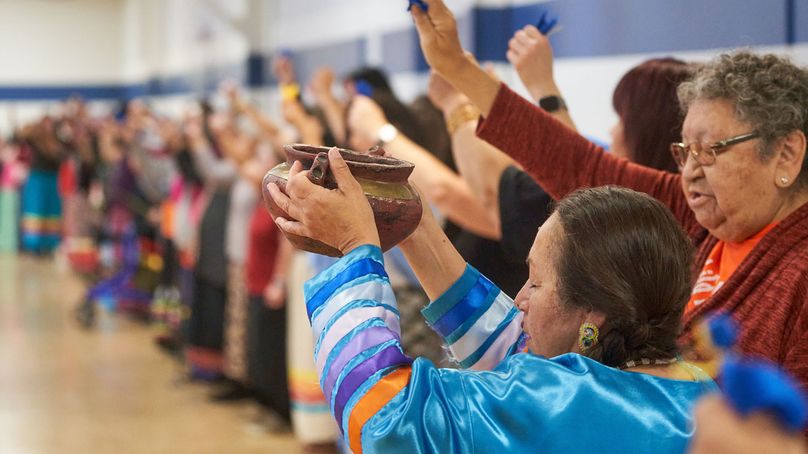On September 8, 2022, the Waciye Water Ceremony and Blessings was held at the Keeyask site.
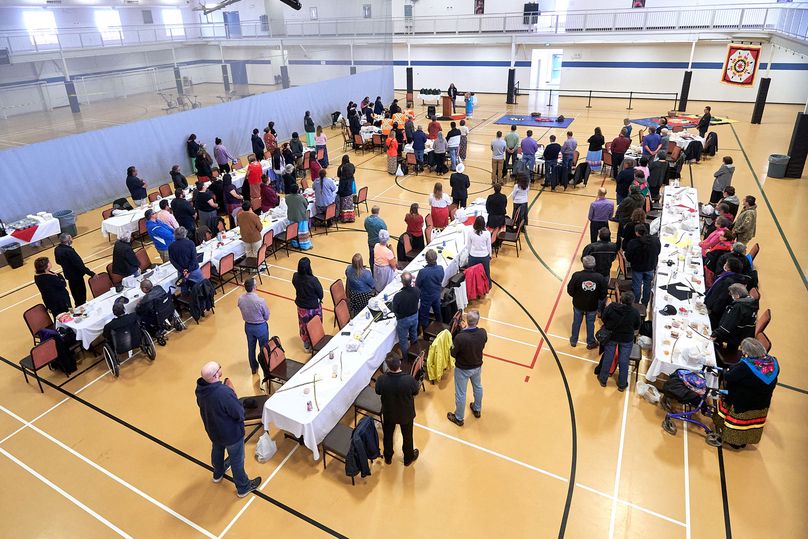
Gathered at Keeyask for the Waciye Water Ceremony and Blessings.
The gathering was attended by leadership, elders, youth and advisors from the partner communities, and representatives of Manitoba Hydro.
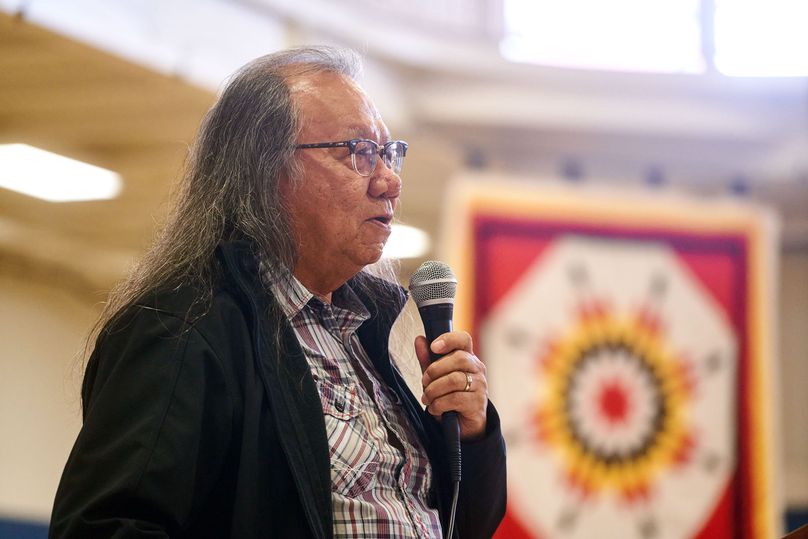
Robert Wavey led the event, and introduced the speakers and the ceremonies.
The event was emceed by Robert Wavey (Fox Lake Cree Nation) and included remarks from Chief Morris Beardy (Fox Lake Cree Nation), Chief Betsy Kennedy (War Lake First Nation), Councillor Wayne Redhead (York Factory First Nation), Bishop Isaiah Larry Beardy (Tataskweyak Cree Nation), MB Hydro CEO Jay Grewal, and Keeyask Project Manager Dave Bowen; a hymn; a pipe ceremony conducted by Wayne Redhead and Robben Constant (York Factory First Nation); a water ceremony led by Susan Kobliski; prayers; and a feast shared by all.

A prayer and feast wrapped up the event.
Enlarge image: Indigenous elders are served a meal from the selection at the buffet.

Jay chats with members from one of the communities before the ceremonies.
Susan Kobliski said, “I think this is one of the final stepping stones towards the last portion of the infrastructure of the dam and we have to acknowledge the spirit of the water.”
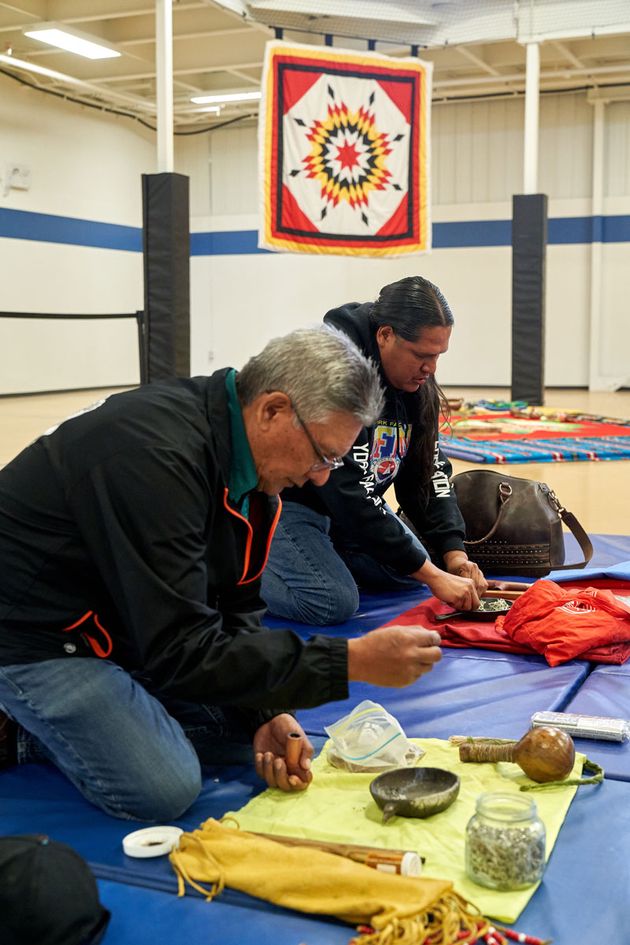
Before the event starts, Wayne and Robben set up for the pipe ceremony.
Enlarge image: Two men kneel on a blanket and lay out what they will need for their pipe ceremony.
“The water ceremony, itself, was for all of the efforts of all the partners involved. But it is also for the people of the four nations, the territory, the communities – to acknowledge Keeyask as a whole community.
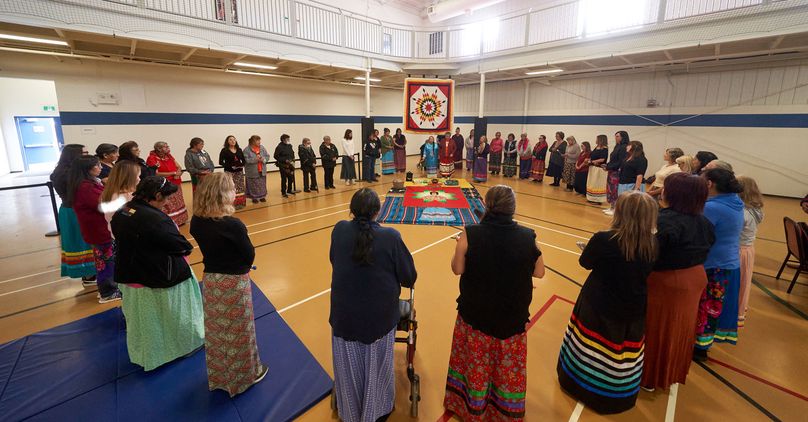
Susan performs the water ceremony.
“It’s a ceremony for every part of the water, the earth, the animals … the winged ones, everything that is alive and how it has been affected; encouraging us to stay focussed on what it is that continues to flow – the water, the seasons.”
The Keeyask Generation Project is a partnership between Manitoba Hydro and the four Manitoba First Nations – Tataskweyak Cree Nation, War Lake First Nation, York Factory First Nation, and Fox Lake Cree Nation – working together as the Keeyask Hydropower Limited Partnership.
The major milestone, having all of Keeyask’s generating units brought online, meant it was important for the partner communities and the project to hold a ceremony to acknowledge the effects and the changes made to the land.
“While all seven units are capable of providing power to Manitobans, two units still need to go through complete testing and certification to allow them to enter commercial service,” said Ryan Ward (Director, Project Management).
“Commercial service certification allows us to include the generators’ output for export or sales in commercial contracts.”
Following that, there is still work to be completed in the powerhouse on the ‘balance of plant’ mechanical & electrical infrastructure.
Demobilization – the work to take apart structures used for things like offices, water treatment, and other project support – is also continuing. The major piece of demobilization still to be accomplished is the closing of the site camp, deconstructing it, and shipping it offsite.
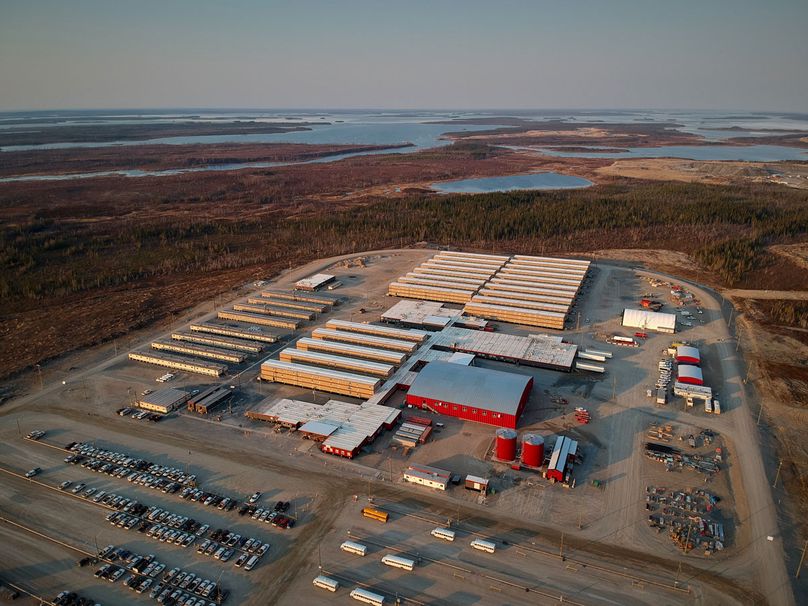
The camp at the Keeyask site.
A significant part of the project that has commenced, but has more work ahead, is re-vegetating areas used during the construction phase – such as work areas, excavation sites, and areas used to support the project.
Allison Zacharias (Manager, Generation Environmental Services) said, “This involves de-compacting ground that was compressed in the used areas, reshaping the surfaces and planting native vegetation to allow disturbed areas to return to nature over time.”
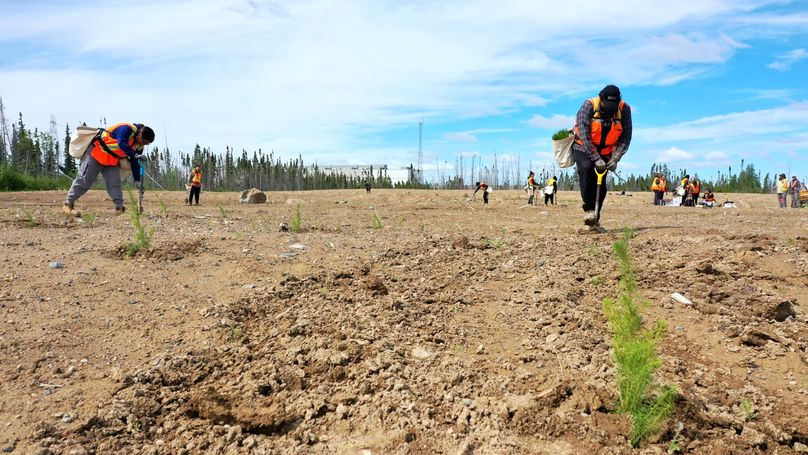
Tree planting at Keeyask in 2022.
In all, around 18 months or more remains for work related to the construction of the powerhouse, then the Keeyask generating station can be considered complete.
Even though the generating station construction is nearing completion, environmental mitigation works and extensive environmental monitoring - including fish and wildlife - will continue for many years to come.

